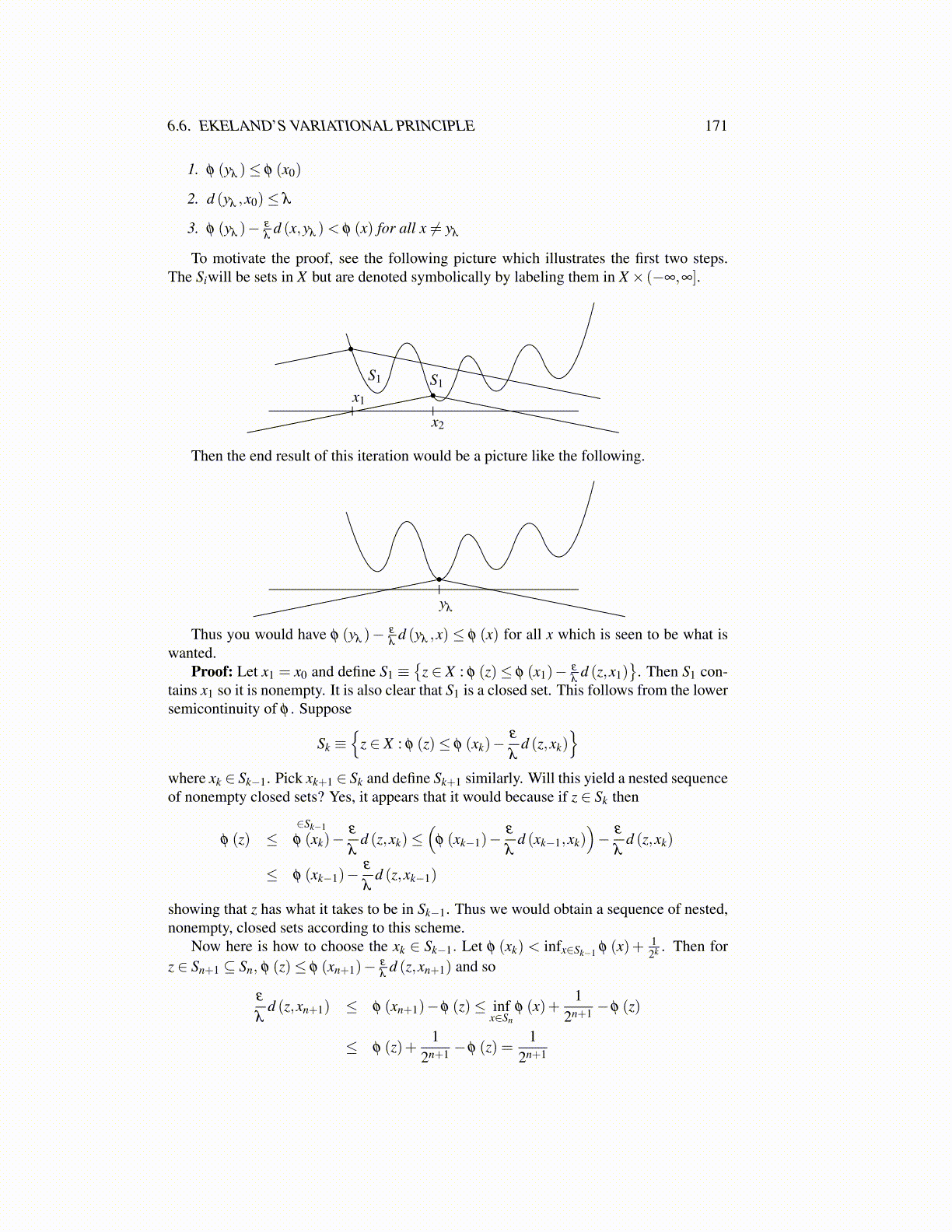
6.6. EKELAND’S VARIATIONAL PRINCIPLE 171
1. φ (yλ )≤ φ (x0)
2. d (yλ ,x0)≤ λ
3. φ (yλ )− ε
λd (x,yλ )< φ (x) for all x ̸= yλ
To motivate the proof, see the following picture which illustrates the first two steps.The Siwill be sets in X but are denoted symbolically by labeling them in X× (−∞,∞].
x1
x2
S1 S1
Then the end result of this iteration would be a picture like the following.
yλ
Thus you would have φ (yλ )− ε
λd (yλ ,x) ≤ φ (x) for all x which is seen to be what is
wanted.Proof: Let x1 = x0 and define S1 ≡
{z ∈ X : φ (z)≤ φ (x1)− ε
λd (z,x1)
}. Then S1 con-
tains x1 so it is nonempty. It is also clear that S1 is a closed set. This follows from the lowersemicontinuity of φ . Suppose
Sk ≡{
z ∈ X : φ (z)≤ φ (xk)−ε
λd (z,xk)
}where xk ∈ Sk−1. Pick xk+1 ∈ Sk and define Sk+1 similarly. Will this yield a nested sequenceof nonempty closed sets? Yes, it appears that it would because if z ∈ Sk then
φ (z) ≤∈Sk−1
φ (xk)−ε
λd (z,xk)≤
(φ (xk−1)−
ε
λd (xk−1,xk)
)− ε
λd (z,xk)
≤ φ (xk−1)−ε
λd (z,xk−1)
showing that z has what it takes to be in Sk−1. Thus we would obtain a sequence of nested,nonempty, closed sets according to this scheme.
Now here is how to choose the xk ∈ Sk−1. Let φ (xk) < infx∈Sk−1 φ (x)+ 12k . Then for
z ∈ Sn+1 ⊆ Sn, φ (z)≤ φ (xn+1)− ε
λd (z,xn+1) and so
ε
λd (z,xn+1) ≤ φ (xn+1)−φ (z)≤ inf
x∈Snφ (x)+
12n+1 −φ (z)
≤ φ (z)+1
2n+1 −φ (z) =1
2n+1